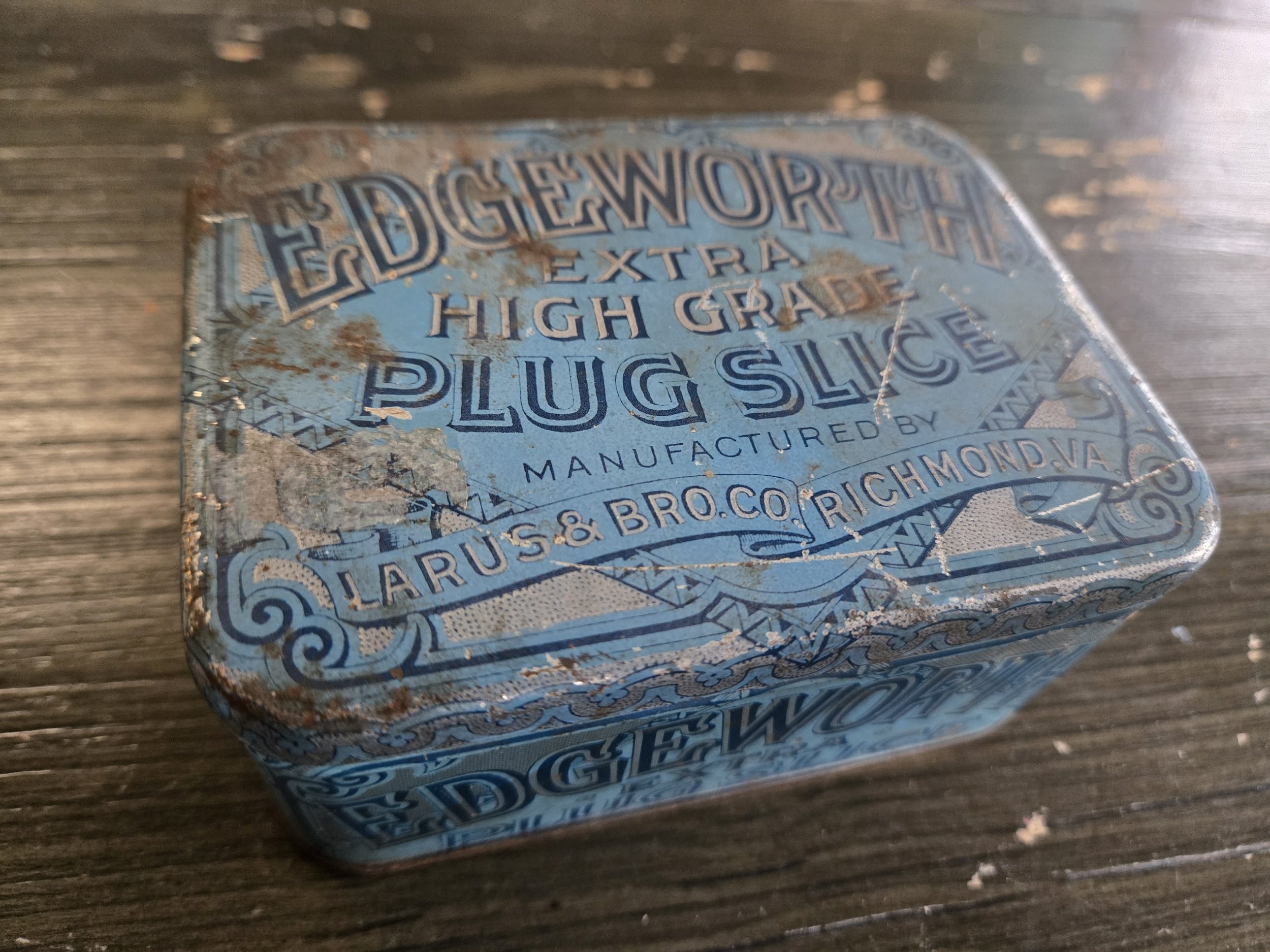Women Labor Leaders Who Torched the Tobacco Industry
I picked up a cool almost-antique Edgeworth Plug Slice tin because I love a good piece of vintage tobacciana (who doesn’t?). The embossed lettering, the faded blue color, the ironic promise that its tobacco "will not burn the tongue"; it’s got everything I want in a WTF relic of the near past.
What I didn’t expect that day in the antique shop was that this tin would lead me into a history of bad-ass Black women-led labor strikes in the tobacco industry. The tin I own is likely from the very heart of the adventure we're about to explore: the volatile 1930s.
While Edgeworth and other brands made their money selling pipe tobacco to well-heeled gentlemen (my eyes just broke from rolling), the work that made it possible – harvesting, curing, endless stripping of stems – was done by underpaid Black women, many of whom eventually decided they'd had enough, and did something about it.
The Tobacco Industry’s Hidden Workforce
For much of the early 20th century, the tobacco industry depended on Black women workers to process the leaves that filled tins just like mine. Factories from Richmond, Virginia to Durham and Winston-Salem, North Carolina were packed with women hired to strip stems from leaves, tedious, repetitive work done for miserable wages. We’re talking hot, dusty, unventilated warehouses, sometimes for as little as $3 per week (about $57 today) in exchange for 90+ hour workweeks.
And while tobacco profits soared, pay for the women doing the hardest, dirtiest work did not. Probably because those factory owners didn’t expect resistance.
They were wrong.
Louise "Mamma" Harris and the 1938 Tobacco Strike
By the late 1930s, Black tobacco workers had had enough of low wages and terrible conditions. Enter Louise "Mamma" Harris, a labor organizer in Richmond who helped lead one of the largest strikes in the city’s tobacco-stained history. Fuck yeah.
In 1938, Harris organized workers at I.N. Vaughan Export Stemmeries, a tobacco processing plant, to demand better pay and working conditions. The strike started small, with a handful of women walking off the job, but it quickly grew.
Unsurprisingly, factory owners were fucking furious. They brought in strikebreakers; they threatened workers with job losses. They stomped their feet and threatened to hold their breath until they died. But Harris and the others stood their ground. And after weeks of pressure, they won a minimum wage of 40 cents an hour ($7.61 today), a forty-hour workweek and the opportunity to earn overtime. Go, Mamma!
It was a huge victory for Black women in the labor movement and set the stage for more labor actions in the tobacco industry.
The Sit-Down Strikes That Followed
The 1938 strike wasn’t isolated. Throughout the 1930s and ‘40s, Black women workers, often the lowest-paid in factories, began adopting more radical tactics, including sit-down strikes. Instead of walking out, they would stay in the factory, refusing to work but also refusing to leave, making it harder for factory owners to bring in replacements. It was a bad-ass move, and it worked.
The sit-down strike had already succeeded for auto workers in Flint, Michigan, in 1937. Tobacco workers took note. In Durham and Winston-Salem, women took over factory floors, refusing to move until demands were met. These strikes forced companies to recognize unions, increase wages and improve working conditions across the industry.
The tobacco that once filled my Edgeworth Plug Slice tin didn’t appear out of thin air. It was processed by thousands of underpaid Black women who fought hard for the right to be treated like, you know, human beings. Women like Louise Harris put everything on the line to demand fair wages and safer workplaces, and they deserve to be remembered for it.
Looking for more on the history of tobacco? Check out: A Vintage Crystal Cigarette Lighter & How Women Were Sold a Load of BS.

